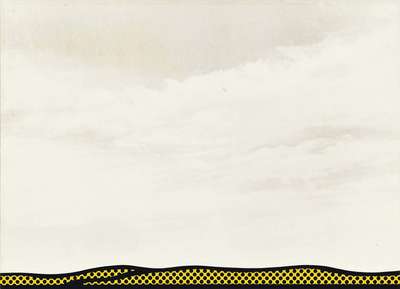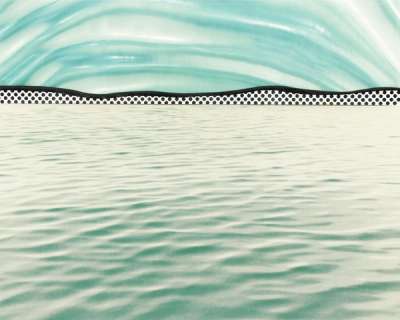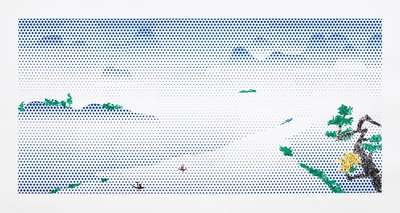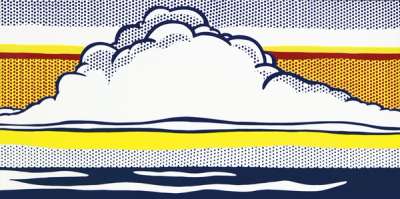
Seascape II

Seascape II
Signed Mixed Media
Roy Lichtenstein
£13,000-£20,000Value Indicator
$26,000-$40,000 Value Indicator
$23,000-$35,000 Value Indicator
¥120,000-¥180,000 Value Indicator
€16,000-€24,000 Value Indicator
$130,000-$200,000 Value Indicator
¥2,480,000-¥3,820,000 Value Indicator
$16,000-$25,000 Value Indicator
AAGR (5 years) This estimate blends recent public auction records with our own private sale data and network demand.
There aren't enough data points on this work for a comprehensive result. Please speak to a specialist by making an enquiry.
Medium: Mixed Media
Edition size: 100
Year: 1965
Size: H 10cm x W 63cmx D 9cm
Signed: Yes
Format: Signed Mixed Media
TradingFloor
Track this artwork in realtime
Watch artwork, manage valuations, track your portfolio and return against your collection
Track auction value trend
Auction Results
| Auction Date | Auction House | Location | Hammer Price | Return to Seller | Buyer Paid |
|---|---|---|---|---|---|
| May 2024 | Bonhams New York | United States | |||
| November 2022 | Christie's New York | United States | |||
| September 2019 | Christie's London | United Kingdom | |||
| December 2014 | Christie's London | United Kingdom | |||
| June 2013 | Ketterer Kunst Hamburg | Germany | |||
| June 2011 | Sotheby's Paris | France | |||
| January 2007 | Binoche & Giquello | France |
Meaning & Analysis
Roy Lichtenstein’s Landscapes, Moonscapes And Seascapes collection constitute a thorough revision of the landscape genre. The vast sequence spans over three decades of the artist’s career and comprises several autonomous groupings. This signed mixed media print was executed in 1965 as part of a limited edition of 100.
Roy Lichtenstein’s intricate landscapes, moonscapes and seascapes works span over thirty years of his career. Time and time again, the artist would return to this innovative sequence to revise the means of landscape painting. As a result, his extensive project features several autonomous portfolios and individual editions.
Seascape II of 1965 is a screenprint and die-cut collage mounted inside a white painted wooden box with plexi front. Highly experimental in its use of materials, the artwork presents a fictitious and humorous waterscape. Stretched out at the bottom and pasted on the vivid blue backdrop lies a body of water constituted entirely out of yellow stencil. The rippled contours mirror the design of the prismatic sky, transforming a naturalistic setting into something entirely artificial.
The resulting scene shows a fully abstracted and static seascape at first glance. Despite a sense of overriding flatness, however, the reflective surface texture provokes sensory associations of motion. Lichtenstein applies plastic sheets of translucent Rowlux to ensure these spatial interplays, producing a playful simulation of movement. In no other adaptation of a genre was Lichtenstein as experimental with materials as he was in his landscape renditions. His quest to create optical illusions and plays on perception continued in his Mirrors and later Reflections series.



















